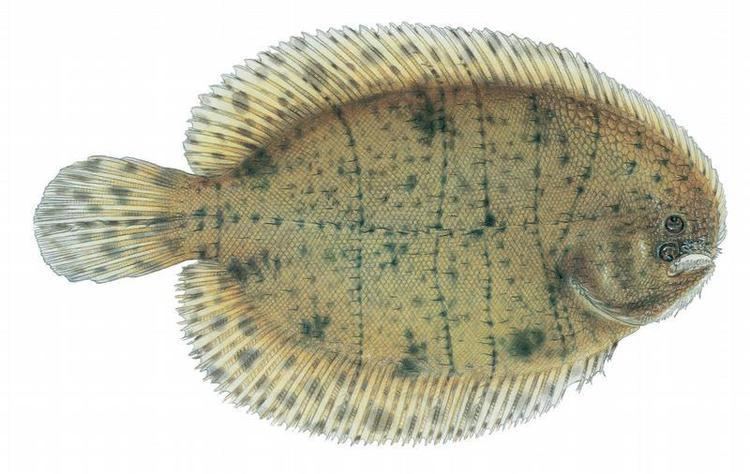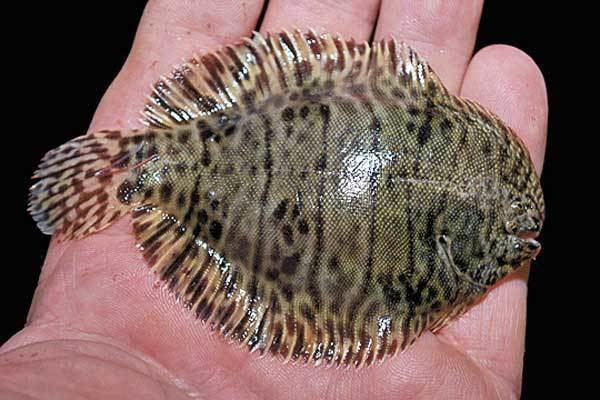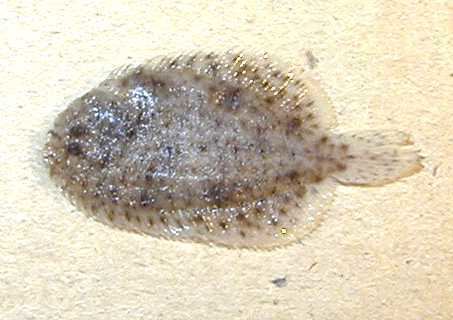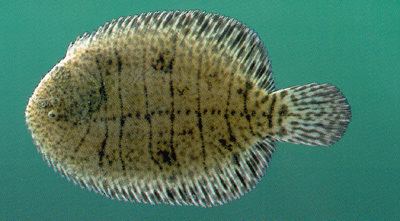Phylum Chordata Rank Species | Family Achiridae Scientific name Trinectes maculatus Higher classification Trinectes Order Flatfish | |
 | ||
Similar Trinectes, American sole, Achirus, Flatfish, Achirus lineatus | ||
Freshwater flounder hogchoker trinectes maculatus hiding
The hogchoker (Trinectes maculatus) is a small flatfish found along the Atlantic coast of North America, ranging from Massachusetts and Florida to Panama. They prefer brackish water, and are abundant in many bays and estuaries north of the Carolinas (another similar species replaces it south of the Carolinas). It is a member of the American sole family Achiridae. They are usually brown to dark brown in color, and lighter on their "blind side" (side lacking an eye). The overall body color is often broken by a series of spots and thin stripes, which can be lighter or darker than the main body color. The fins and tail have fringed edges helping hide the fish from its prey. They mainly feed on small aquatic insects and invertebrates.
Contents
- Freshwater flounder hogchoker trinectes maculatus hiding
- Hogchoker sole trinectes maculatus first time feeding on
- In the aquarium
- References

Distinguished from other species by an interbrachial septum lacking a foramen, T. maculatus often has no (rarely one) ray(s) in its pectoral fin.

Hogchoker sole trinectes maculatus first time feeding on
In the aquarium
Hogchokers are sometimes offered for sale in aquarium stores, often marketed as "freshwater flounder" or "freshwater fluke". This is not fully correct, however. While some species of full freshwater flatfish exist from Southeast Asia and South America, the hogchoker is thought to be a species of coastal estuaries and mud flats. While some aquarists have kept specimens for their whole lives in fresh water, it is not known whether or not they can thrive without salt. Large adult specimens have been found quite regularly up the Mississippi, Hudson, and East Rivers, so long as the bottom is soft sand and rich enough to cultivate small invertebrates on the substrate. They spend their time in aquariums attached to rocks, driftwood, and the glass, using their bellies as suction cups in much the same manner as hillstream loaches.

They are hard to feed, preferring live food such as brine shrimp, Daphnia, mosquito larvae, and Tubifex worms. In the wild, they feed mainly by sifting tiny organisms (white sandworms in salt and brackish water, insect larvae in fresh) out of sand and mud. When unhealthy, the spots on this fish's belly often change color or move.


